This simple science demonstration uses only a few basic materials but demonstrates several scientific concepts and looks super impressive. Showing children the end result first is a great way to get them to start questioning and thinking about what's happening and why.
There are two different things children can observe with this activity.
- How fast the ice cube melts in each glass.
- What happens to the ice cube water as it melts?
Adding salt to water increases its density. This means the melted water from the ice cube should sit on top of the salty water, as the water without salt has a lower density.
If you've ever made ice cream in a bag, you know that salt lowers the freezing point of water, so you might expect the salty water to melt the ice cube faster, but in our case, this didn't happen.
Does ice melt faster in freshwater or saltwater?
You'll need
Two tall glasses
Water
Salt
Ice cube tray
Spoon
Freezer
Food colouring
Instructions
Fill two segments of an ice cube tray with water and food colouring and place in a freezer until frozen.
Fill each glass to about 3 cm from the top with room temperature water.
Add two tablespoons of salt to one glass and stir until the salt has dissolved and the water is clear.
Place one ice cube into each glass and watch what happens.
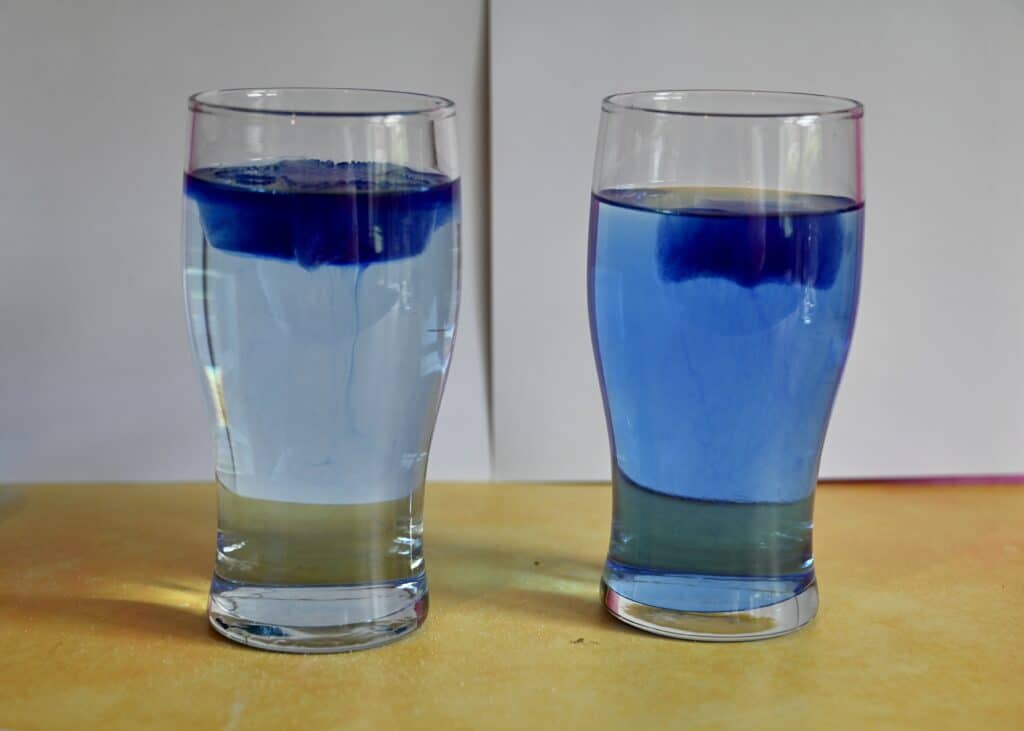
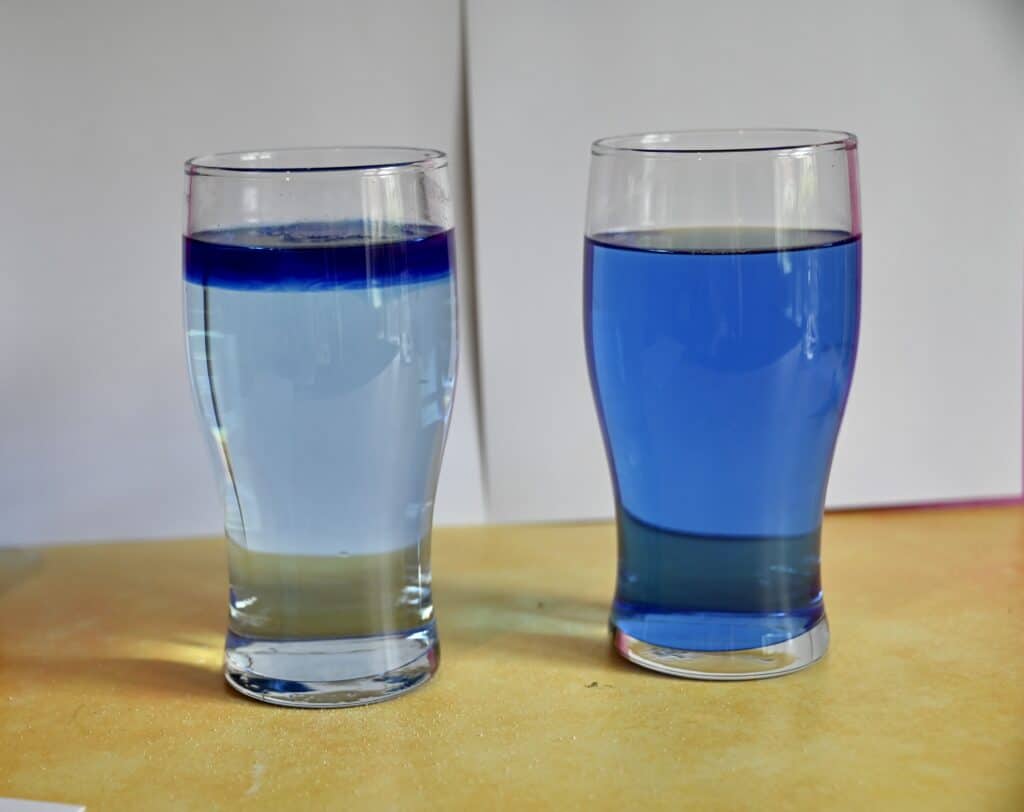
You can see that in the glass containing salt, the ice cube melted more slowly, and the water from the melted ice cube mostly stayed near the top of the glass.
This is because the salty water underneath is denser than the ice cube water and food colouring, so the ice cube water sits on top of the salty water.
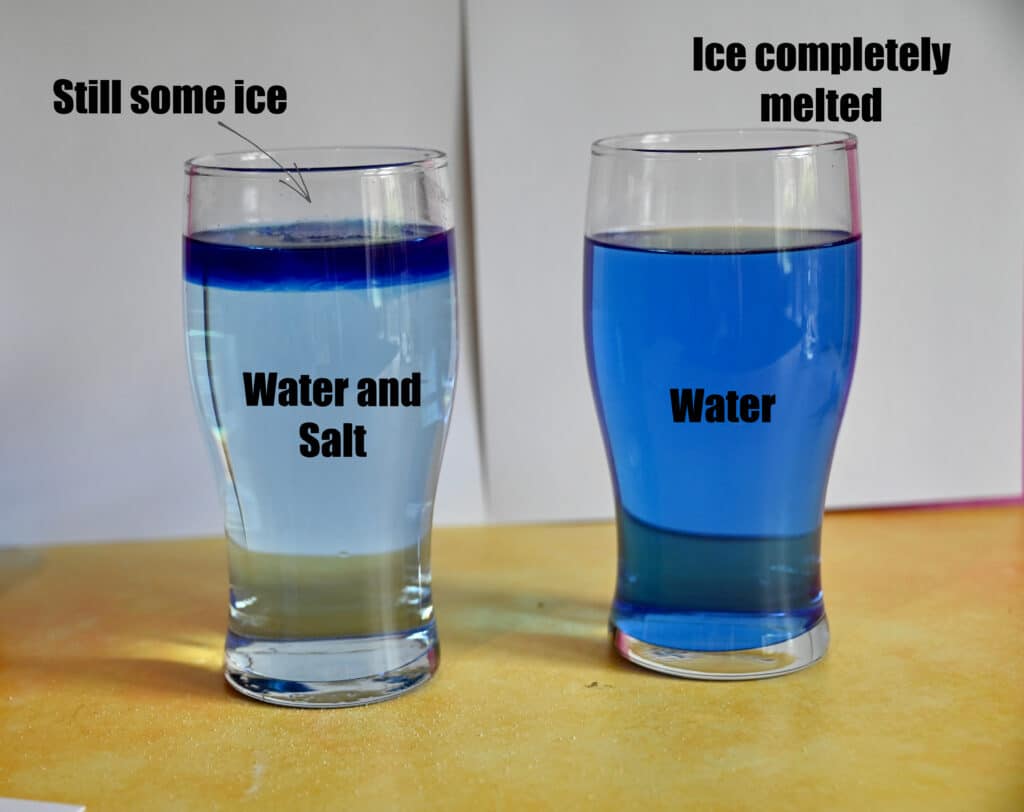
We expected the ice cube to melt faster in the salty water, but this didn't happen. However, we noticed that the coloured water mixed with the freshwater quickly, forming a convection current. The cooler ice cube water sank to the bottom, and the warmer, less dense water rose up, creating a small current as the ice melted. This didn't happen in the salty water. Some of the coloured ice cube water did sink, but it mostly stayed on the top, so it wasn't warmed as much as the ice cube in the fresh water.
Extra Challenges
Repeat the activity using containers with one tablespoon of salt, two tablespoons of salt, three tablespoons of salt, and no salt.
Set children a challenge to work out which glass of water contains the most salt from four containers, each containing different amounts of dissolved salt.
More salt experiments
Use the cooling power of salt to chill a warm drink quickly!
Discover how salt melts snow.
Learn more about density with a salt lava lamp.
Find out about evaporation by making coloured salt crystals.
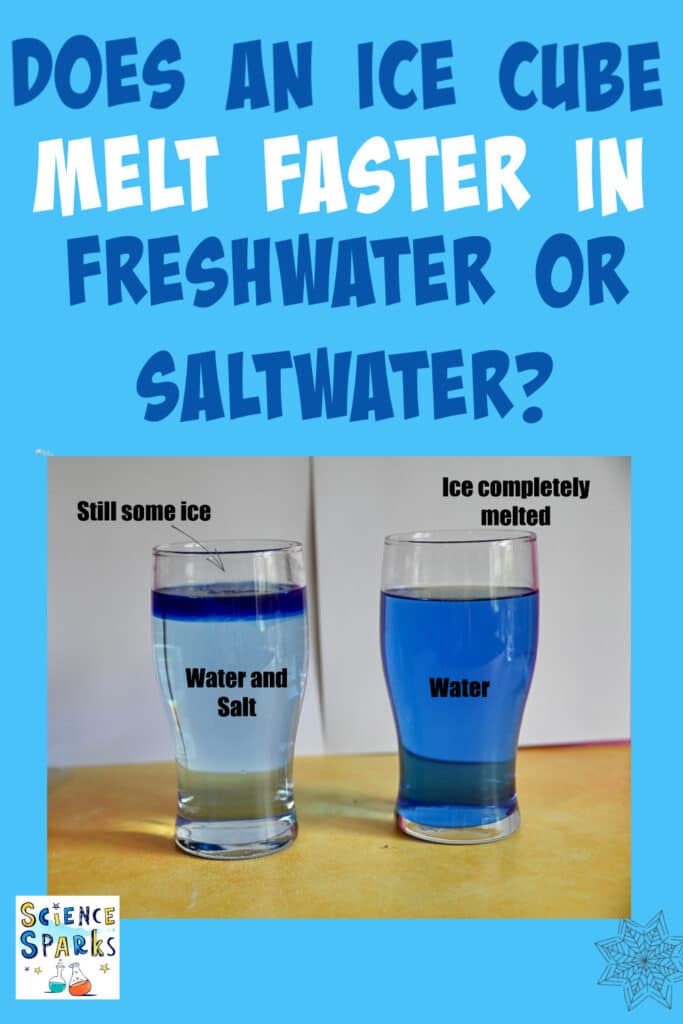
Science concepts
Buoyancy
Heat Transfer
Melting
Freezing
Last Updated on May 22, 2024 by Emma Vanstone
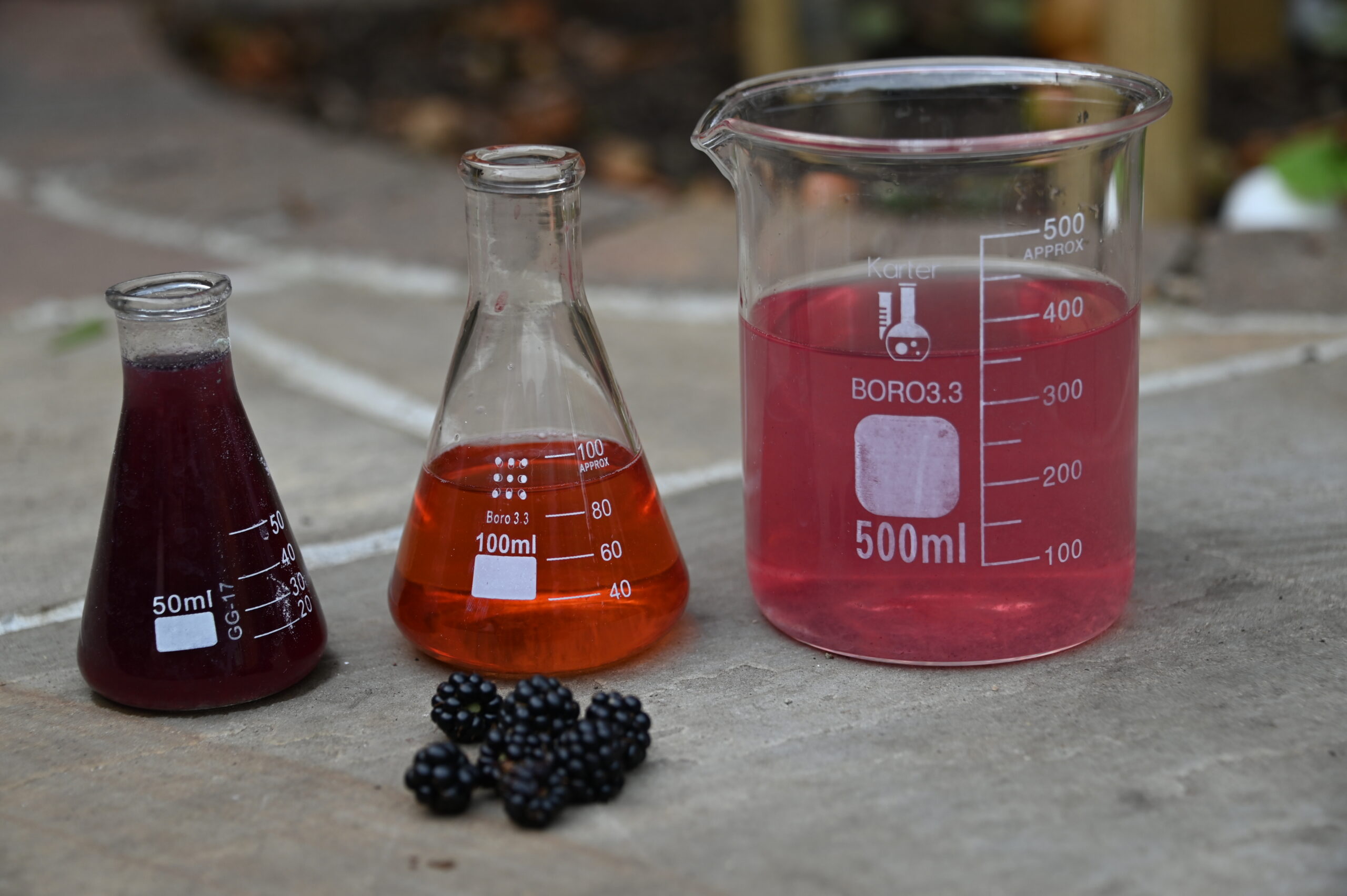
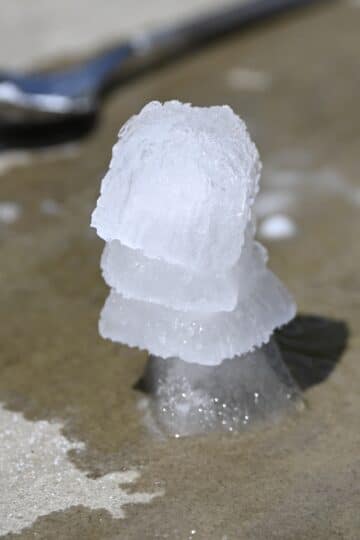
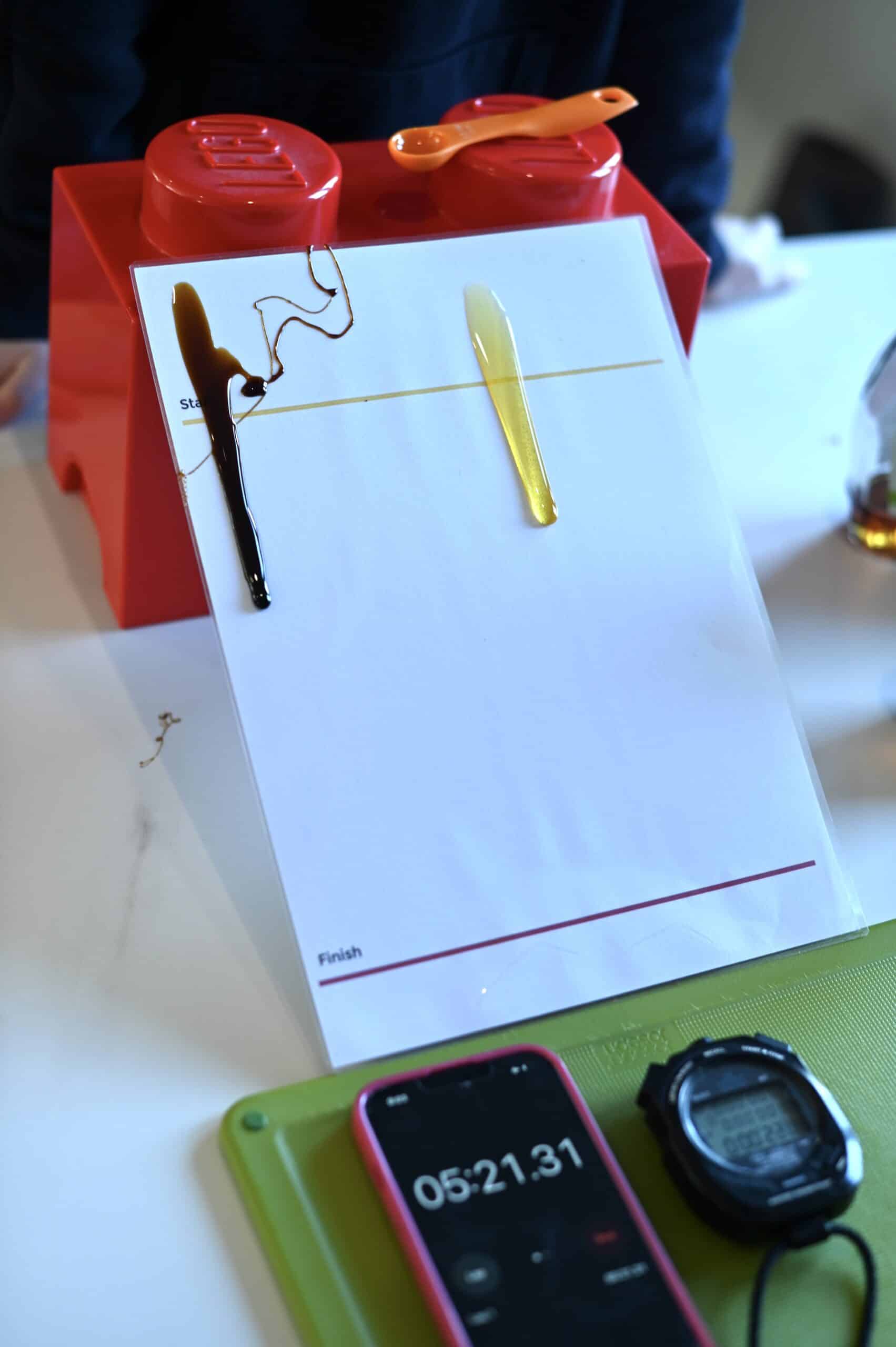
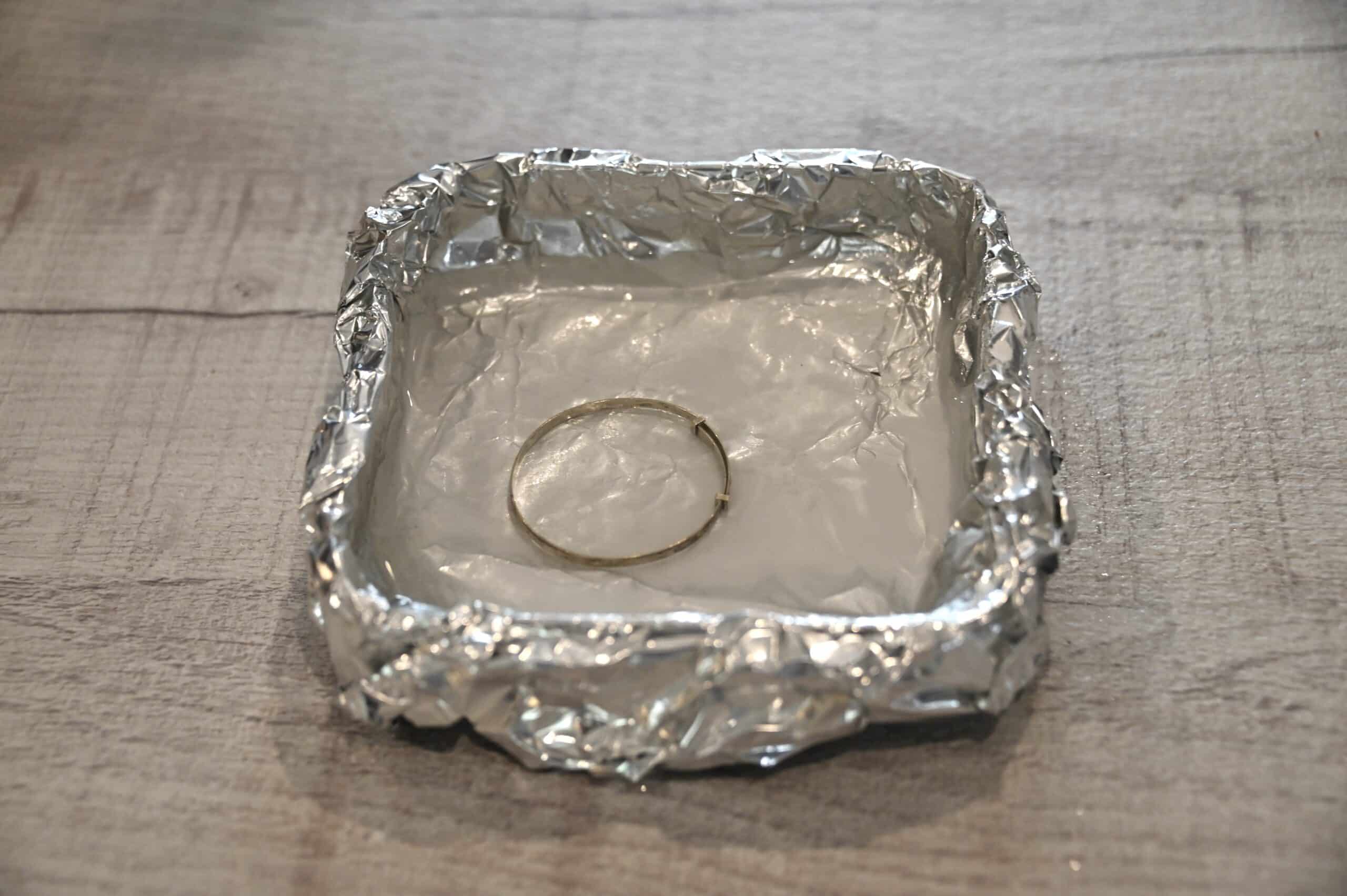
Karen says
Thanks Emma. Really enjoying your suggestions.